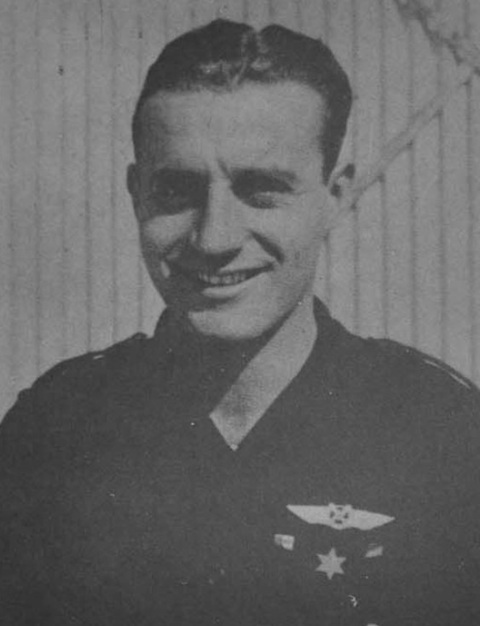Italy

Tenente Vittor Ugo Ceccherelli Medaglia d’oro al valor militare
Italy

Tenente Vittor Ugo Ceccherelli Medaglia d’oro al valor militare

| Year Gazetted | Decoration | Note |
| 1937 | Medaglia d’oro al valor militare | O.M.S. |
| 1938 | Medaglia d’argento al valor militare (Posthumous) | O.M.S. |
| 1938 | Medaglia di bronzo al valor militare (Posthumous) | O.M.S. |
Vittor Ugo Ceccherelli was born on 12 February 1912 and was from Arezzo.
Tenente Ceccherelli served in the 1o Stomro CT before taking part in the Spanish Civil War using the nom de guerre ’Vaccarese’.
At dawn on 14 August 1936, the Italian freighter Nereide entered the port of Melilla, on the Mediterranean coast of Spanish Morocco. This important town had been occupied four weeks earlier by Nationalist forces led by general Franco himself. The vessel’s cargo consisted of 12 CR.32s, which had been embarked in the Italian port of La Spezia a week earlier.
As well as spare parts for the Fiat fighters, the ship had also transported 18 volunteers from the Regia Aeronautica to North Africa, their passports bearing false details. Amongst them were the first 12 Italian fighter pilots to arrive on Spanish territory. They were led by Capitano Vincenzo Dequal (’Paride Limonesi’) of the 1o Stormo CT and his flight leaders were Tenente Ceccherelli (’Vaccarese’), also of the 1o Stormo CT, Tenente Ernesto Monico (’Preti’) of the 4o Stormo CT and Sottotenente Giuseppe Cenni (’Vittorio Stella’) of the 1o Stormo CT. The remaining enlisted pilots were Sergente Maggiore Giuseppe Avvico (’Nannini’) the 4o Stormo CT, Sergente Maggiore Bruno Castellani (’Ribaudi’) of the 6o Stormo CT, Sergente Maggiore Sirio Salvadori (’Salvo’) of the 4o Stormo CT, Sergente Angelo Boetti (’Ilacqua’) of the 1o Stormo CT, Sergente Adamo Giuglietti (’Guglielmotti’) of the 1o Stormo CT, Sergente Giovanni Battista Magistrini (’Marietti’) of the 1o Stormo CT, Sergente Vincenzo Patriarca (’Boccolari’) of the 4o Stormo CT and Sergente Guido Presel (’Sammartano’) of the 6o Stormo CT. The groundcrew consisted of just three aircraft riggers and three mechanics.
After being welcomed by Spanish officers and the local Italian Consul, the pilots and groundcrew were immediately enrolled into the Tercio Extranjero with their equivalent ranks.
The CR.32s were assembled at Nador (Melilla) over the course of several days and eventually transferred by air to Tablada (Seville), in southern Spain.
The 12 CR.32s were integrated into the Aviación del Tercio and these, the first fighter unit of this force became the Primera Escuadrilla de Caza de la Aviación del Tercio (1a Escuadrilla de Caza del Tercio) and was commanded by Capitano Dequal.
The new squadron's initial operations consisted of patrols and single sortie missions as dictated by the particular operational requirements and limited efficiency of its aircraft. The CR.32 pilots struggled at first to have an impact on their Republican counterparts because only two of the dozen Fiat fighters in-theatre boasted compasses following a supply oversight in Italy! Unfamiliarity with Spanish terrain and inadequately detailed maps further compounded the unit’s navigational problems when in the air, and the end result was pilot disorientation culminating in emergency landings and damaged aircraft.
Initially, the CR.32s were assigned defensive duties, patrolling overhead Nationalist forces in Andalusia and protecting them from aerial attack, as well as escorting S.81 bombers. The Italian biplanes also provided air cover for the infantry columns of the African Army that had been transported to Spain in the Ju 52/3ms. These troops were particularly vulnerable to attack from the numerically superior Republican air force in the early weeks of the war as they advanced north, occupying western Extremadura. The African Army’s next target was the Spanish capital, Madrid, which it intended to occupy so as to claim international recognition in favour of a new Nationalist administration.
The first aerial encounter between CR.32s and Republican aircraft came during 21 August over the city of Córdoba, in southern Spain, which had fallen into Nationalist hands the previous month. The rebel troops had subsequently come under repeated attack from the air by Republican aircraft, so a flight of three Fiat fighters was sent on detachment from Seville with orders to defend the city. The CR.32s were led by Tenente Ceccherelliand included Sergente Boetti and Sergente Salvadori.
In the evening, during the fifth scramble of the day, Tenente Ceccherelli single-handedly engaged two Republican Ni-H.52s. The Italian pilot duly succeeded in shooting down one of the fighters, expending 172 7.7 mm rounds.
The Ni-H.52 was flown by capitán Antonio Martin-Luna Lesundi, the commander of 2. Escuadrilla ’Lafayette’. The airplane crashed near Talavera in the vicinity of Seville.
Later in the day, two CR.32s were damaged during landing at the provisional aerodrome at Córdoba. The airfield was very dusty, the dust risen by landing airplanes blinded the pilots. Tenente Ceccherelli collided with a Breguet XIX. The other damaged airplane was the CR.32 of Sergente Boetti. However, all three airplanes needed repairs because the guns had jammed in Sergente Salvadori’s fighter. This one flew back to Seville, the remaining two were transported by road.
On 27 August, Tenente Ceccherelli and Sergente Giovanni Battista Magistrini had been sent to the southern city of Granada to defend it from attack. Scrambling on his own, Sergente Magistrini shot down a Ni-H.52 that had been escorting Breguet XIX bombers heading for the city.
This was the second CR.32 victory in Spain.
The Republican pilot seems to have been teniente Antonio de Haro López, who reportedly was killed in combat in the Guadix area.
On 6 November, two air battles took place, at 10:00 and 14:00. In the latter, five Fiats led by capitán Ángel Salas attacked seven ”Chatos” and claimed four victories even if only two claims could be confirmed by ground observers. Salas was thought to have destroyed one machine from a patrol of three, this aircraft trailing smoke as it veered into a cloud and disappeared from sight. Sottotenente Giuseppe Cenni, Tenente Ceccherelli and Sottotenente Bernardino Serafini claimed an I-15 each over the Madrid area.
One of the aircraft destroyed was the I-15 flown by leitenant Voronov, who died two days later in hospital from injuries suffered when he crash-landed upon his return to base.
The Nationalist bulletin claimed two aircraft destroyed, while the Government bulletin, which referred only to the earlier engagement, claimed the destruction of two Heinkels, these two most probably claimed by starshiy leitenant Pavel Rychagov, who claimed two enemy aircraft during the day, but it also possible that one of them was claimed by Karp Kovtun (3a Escuadrilla) who seem to have claimed a victory during the day (according to some sources this was claimed by ramming and thus probably on 13 November when he was killed).
Bonomi confirmed that the Fiats had shot down two fighters, and this was also confirmed by the Air Force communiqué, which admitted the loss of a Fiat and a Junkers. This latter machine was probably flown by Captain Larrauri, who managed to reach Talavera with one engine out of action, the other developing only restricted power, and his aircraft riddled with bullet holes. Von Morau, leader of the Pablos y Pedros squadron, also had to force-land near Madrid at this time.
Tenente Ceccherelli was killed in a flying accident in the Tablada area on 20 December 1936.
At the time of his death, Ceccherelli was credited with 2 victories claimed during the Spanish Civil War.
On 23 Juli 1937, Tenente Ceccherelli was decorated with a posthumous Medaglia d’oro al valor militare (gazetted 1937) for his actions over Spain on 20 December:
“Volunteering for a war mission fought for a supreme ideal, he faced the most difficult trials, always demonstrating exemplary virtues as an experienced and brave fighter. Driven by an unconditionally enthusiastic dedication to the cause to which he had devoted his young and vibrant life, in a heroic attempt to complete a dangerous mission assigned to him, he met a glorious death.”
On 12 November 1936, Sottotenente Ceccherelli was decorated with a posthumous Medaglia d’argento al valor militare (gazetted 1938) for his actions over Spain:
"A volunteer in a war mission fought for a supreme ideal, he bravely faced the most difficult challenges, constantly setting an example of calm disregard for danger and great valour."
Sky of Spain, 12 November 1936 - XV.
Finaly, Tenente Ceccherelli was decorated with a posthumous Medaglia di bronzo al valor militare (gazetted 1938) for his actions over Spain:
"Having volunteered for a dangerous mission, he met a glorious death during it."
Sky of Spain, December 1936 - XV.
Claims:
| Kill no. | Date | Time | Number | Type | Result | Plane type | Serial no. | Locality | Unit |
| 1936 | |||||||||
| 1 | 21/08/36 | evening | 1 | Ni-H.52 (a) | Destroyed | Fiat CR.32 | Córdoba | 1a Escuadrilla de Caza del Tercio | |
| 2 | 06/11/36 | 14:00 | 1 | I-15 (b) | Destroyed | Fiat CR.32 | Madrid area | 1a Escuadrilla de Caza del Tercio |
Biplane victories: 2 destroyed.
TOTAL: 2 destroyed.
(a) Capitán Antonio Martin-Luna Lesundi, CO 2. Escuadrilla ’Lafayette’, shot down.
(b) Four I-15s were claimed but only two could be confirmed by ground observers.
Sources:
Courage Alone - Chris Dunning, 1998 Hikoki Publications, Aldershot, ISBN 1-902109-02-3
Crickets against Rats. Regia Aeronautica in the Spanish Civil War 1936-1937. Vol. 1 - Marek Sobski, 2014 Kagero, Lublin, ISBN 978-83-64596-16-2
Due Volte Asso - Giovanni Massimello, 1997 Storia Militare Nr. 49 Ottobre 1997 kindly provided by Massimo Cappone
Elenco Nominativo dei Militari dell’ A. M. Decorati al V. M. Durante it Periodo 1929 - 1945 1 Volume A - L
Fiat CR.32 Aces of the Spanish Civil War - Alfredo Logoluso, 2010 Osprey Publishing, Oxford, ISBN 978-1-84603-983-6
GORIZIA ed il QUARTO STORMO
Istituto del Nastro Azzurro
Regia Aeronautica: The Italian Air Force 1923-1945 - An Operational History - Chris Dunning, 2009 Ian Allan Publishing, Hersham, Surrey, ISBN 978-1-906537-02-9
The Legion Condor - Karl Ries and Hans Ring, 1992 Schiffer Publishing, ISBN 0-88740-339-5
Additional information kindly provided by Alfredo Logoluso.


